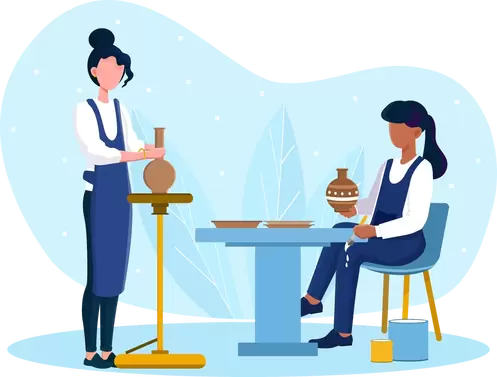CEMETERY MANAGEMENT & CELEBRATION OF LIFE SOFTWARE
|
7/7/2022
Trends in Green BurialAs awareness grows about sustainable practices many people are adopting greener lifestyles. In more and more cases, they are choosing to forgo a traditional burial because it is very taxing to the earth and its resources.
Green burials are eco-friendly ways to minimize your carbon footprint one last time. While most natural burials involve placing unembalmed bodies into the ground where they can merge with the earth, there are in fact several types of green burial methods available. It is important to become knowledgeable about the various kinds of green burials, so you can decide which one is best for you. Revolutionary Eco-Friendly Burial Techniques Mushroom Fiber Coffins – Mycelium, which is a fungus-like bacterial colony, is being used to create innovative coffins that have been called “Living Cocoons.” Bob Hendrikx and his team at Loop created these biodegradable caskets as the ultimate way to help people return to nature. The magic happens at Loop lab at the Technical University of Delft. The team can grow one coffin within a week’s time after mixing mycelium mushroom spores with wood chips using a coffin mold. Once the mycelium has grown through the wood chips, the casket is dried and ready to recycle a body weighing as much as 440 pounds. Mycelium is the green choice for casket construction because mushrooms are nature’s greatest recyclers, according to Hendrikx. Fungi devour toxins and pollutants such as metals, oils and microplastics, then turns them into nutrients that enrich the soil and feed the surrounding plants. Once the mushroom coffin is buried, rainwater and ground water dissolve the coffin within 30 to 45 days. Thanks to the fungi, the body it surrounds decomposes in as little as 3 to 6 months rather than the decade or two it takes when encased within a traditional coffin. The price of a mushroom fiber coffin is about $2,400, which makes it much more financially feasible than a traditional casket. The Living Cocoon made its debut in The Netherlands in 2020. Hydro-cremation – More people are choosing cremation over traditional burials. However, reducing a body to ash using extreme heat is not a very green method because the process is equivalent to driving five hundred miles in a gasoline powered vehicle. Developed in the early 1990s, alkaline hydrolysis, or hydro-cremation, is much more eco-friendly because the process involves the use of 95% water and 5% alkali to dissolve soft tissue, so only bones remain. The process takes approximately two to three hours. The bones are then dried and crushed into a powdery substance that is placed into an urn and returned to the family who can choose to bury or spread the ashes, or even have them turned into keepsakes such as gemstones. Hydro-cremation is ground-breaking because it is less impactful to the environment and uses considerably less energy than traditional cremation. However, there are moral arguments against the process because some people believe that it is not a dignified way to dispose of a body because the liquified remains are sent down the drain. Everyone considering hydro-cremation should conduct their own research before deciding if this method is right for them. Biodegradable Funeral Urns – These eco-friendly vessels are designed to hold cremated ashes and dissolve once they are buried in the ground or placed into a body of water. They can be made of a variety of materials including ecological paper, recycled paper products, cloth, salt, cornstarch, clay, tree bark, palm leaves, and even olive pits. Biodegradable urns come in a wide variety of shapes, colors, and themes. While everyone is sure to find one that appeals to them, industry professionals recommend choosing an urn that is approved by the Green Burial Council. The Living Urn® is a popular choice for those who want to minimize their carbon footprint after they depart. It is a bio urn and planting system that can grow a tree, plant, or flowers that are nourished by the cremated remains. The urn can eventually be placed into the ground, so it can biodegrade while the plant it holds lives on.
Human Composting – Scientifically known as Natural Organic Reduction (NOR), the process involves placing the decedent inside a steel container with wood chips, alfalfa, and straw. Heat and oxygen are applied to the vessel to increase the rate of decomposition by encouraging microbial growth. The contents of the container are blended throughout the decomposition process to break up the bones and ensure the body is fully composted. Once the process is complete, one cubic yard of soil remains, and medical implants are removed. The nutrient rich soil is returned to the family who will use it to create a flower garden or tree memorial dedicated to the deceased loved one. The human composting process takes four to six weeks and costs between $4,000 and $5,500. Transporting the body to the composting facility and delivering the soil to the family are often an extra cost. Natural Organic Reduction is eco-friendly because it uses 1/8 of the energy required for traditional cremation and saves one metric ton of carbon dioxide from entering the atmosphere. If NOR is something you want to consider, check with your state because it is not yet available everywhere. Tree Pod Burial – Organic burial pods are expected to become a popular solution to the problems plaguing traditional burials. This unique concept was created by Italian designers Francesco D’Angelo and Adriano Del Ferro. When they unveiled their conceptual tree pod burial system in 2016, they called it Capsula Mundi. According to the designers, the unembalmed body is wrapped in natural fiber cloth, then placed into an eco-friendly, egg-shaped pod. Once the pod is buried in the ground, a tree is planted directly on top. As the body decays, it feeds the tree with nutrients and microbes. Contribute to Science – As more people become earth conscience, there are those who are choosing to donate their body to science. Deciding to forgo a burial altogether is a green choice in and of itself; however, allowing your remains to educate others makes an even greater impact.
There are several avenues available should you decide to go this route. Medical schools are always in need of cadavers, but few people are aware that anthropologists and forensic scientists require them as well. Outdoor human decomposition research laboratories, or body farms, expose cadavers to nature’s elements and adverse situations to discover how a body decomposes under specific circumstances. Their research is used to solve crimes by understanding how moisture, temperature, insects, and other variables uniquely affect a human body’s decomposition. The researchers at body farms also use cadavers to learn how to determine the age, sex, and ancestry of a decedent by analyzing the measurements and characteristics of skulls and other bones. These facilities do more than educate scientists. They are also used to train cadaver dogs! If donating your remains to a body farm sounds like something you might want to consider, check out this article to learn more. Green Burials are More Than Just a Trend It is clear as a mountain stream that traditional burials are simply not feasible if we want a brighter future. When you live your life in ways that keep the planet healthy, it only makes sense to choose an eco-friendly burial or use your death to further scientific discovery. Deciding not to get embalmed is the first step, then you can opt for any of the eco-friendly methods discussed above. No matter what you decide, it is imperative that you notify a trusted relative or friend of your plans, so you can be sure that your final wishes will be honored. A software program called EverArk can help because it allows you to create a living trust. Using this state-of-the-art software safeguards your plans and allows you to make changes at any time. EverArk also provides you with the opportunity to design a digital legacy that your loved ones and future generations will cherish for life. If you are interested in learning how EverArk can help you design a living trust that details your green burial plans, request a demo today! |
Take a quick tour of EverArkLearn how EverArk can help you manage your cemetery and increase your revenue and growth.
|
Scroll through our features by user typeEverArk provides in-depth functionality for all cemetery users and customers.
Cemetery Management SoftwareCelebration of Life Software & App |
Try before you buy. Or, start with our Pro PlanSign up now and lock yourself into our beta pricing. Our extremely affordable $12 per user/month isn't going to last long.
|
Learn about our partner programWe value great partners and want to establish long-lasting relationships to build upon.
|
Read our latest blogStay informed with our latest blog chatter and industry trends.
|
|
Shop the plots our EverArk customers are selling online.
|
All our resources are at your fingertipsStay informed and explore all of our content, news, jobs, articles, and more. |
Register for EverArkTake the next step in cemetery innovation and get started with EverArk. Click on the type of user you are. |
|
Quick Links
TOURFEATURESPRICINGPARTNERSBLOG
QUICK FACTS |
|
|
|
|
|
© 2024 Eternal Legacy Company LLC. All rights reserved.
EverArk® trademark is owned by Eternal Legacy Company LLC. |
TERMS OF SERVICE |
PRIVACY POLICY |
COOKIE POLICY |
DISCLAIMER |
SITEMAP |
|
U.S. PATENT
DIGITAL LEGACY AND LOCATION SERVICES FOR BURIAL SITES Covered by: U.S. PRV Application No. 15/865,298 |
|





















